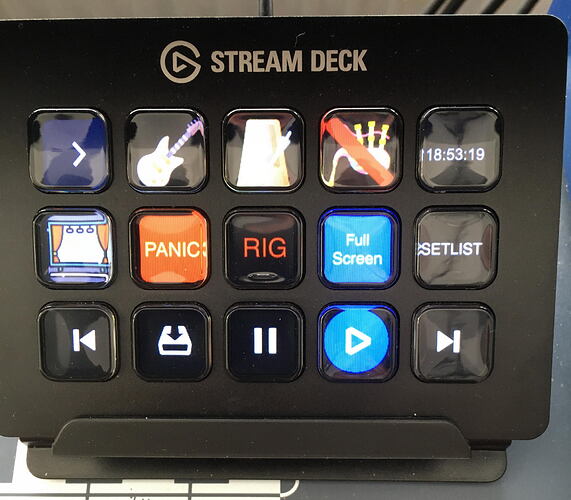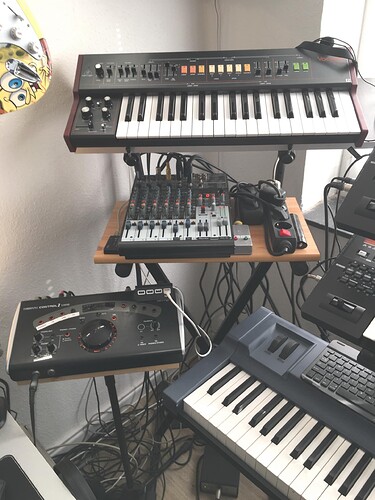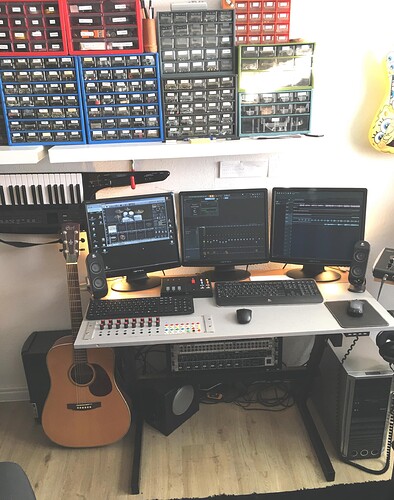Hello all,
until about a year ago, I used a Korg Kronos 2-88 and a Roland A-800 Pro on stage (the Kronos is not so good for fast synthesizer solos with its hammer-action keyboard). The Kronos has a very classy sound, but is extremely large and heavy. Together with the flightcase it is almost 50 kg.
To get some relief when transporting it, I bought a MacBook Pro and ran it with MainStage. Unfortunately, MainStage is quite complicated to program and the computer was also overloaded relatively quickly.
Next, I tested Gig Performer 3 and found that the software is extremely reliable and very easy to program.
As an electronics engineer, I got into programming synthesizers at a very early age and developed a passion for creating and reproducing sounds. This is especially easy to do with Gig Performer.
The most used plugins by me are:
- Arturia V Collection 8
- Pianoteq 7 (piano/e-piano)
- Blue 3 (organ) and PSP Lotary (Leslie)
- all plugins from Cherry Audio
- many plugins from TAL (Togu Audio Line)
As central control I use at home as well as live two Roland A-800 Pro Keyboards each and the Elgato Stream Deck with a Presonus Studio 26c Audio Interface. So I only have to transport the MacBook, since everything is duplicated.
On stage, I also use a wireless Deger E-Pipe (electronic bagpipes), a Roland AX-Synth as a wireless MIDI controller (with Panda MIDI Beam), and a wireless start/stop switch to start the show intro (converted garage door opener).
The Roland keyboards have 61 keys, a lot of controllers, aftertouch and a lever, which I personally find easier to use than the usual two wheels. This may be because my first synthesizer was a Korg Poly 61 with joystick ![]()
The Steam Deck impresses with its versatility, its price as well as its ultra-rich programmability.
This is done via an app that can program the keyboard commands as well as the LCDs of the 15 keys.
Keyboard commands and MIDI commands are all (!) possible including SysEx.
On stage, the Stream Deck does all of the needed gig performer operations:
- next/previous song
- start/stop backtracks
- E-Pipes on/off (Mute Input)
- click track on/off
- bass track on/off
- current time
- panic switch
- show Rig Manager
- full screen switch
- show setlist
- as well as other commands
I would be happy to answer questions about programming the Elgato Steam Deck or building and working with my setup!
Many greetings
Stoffel




